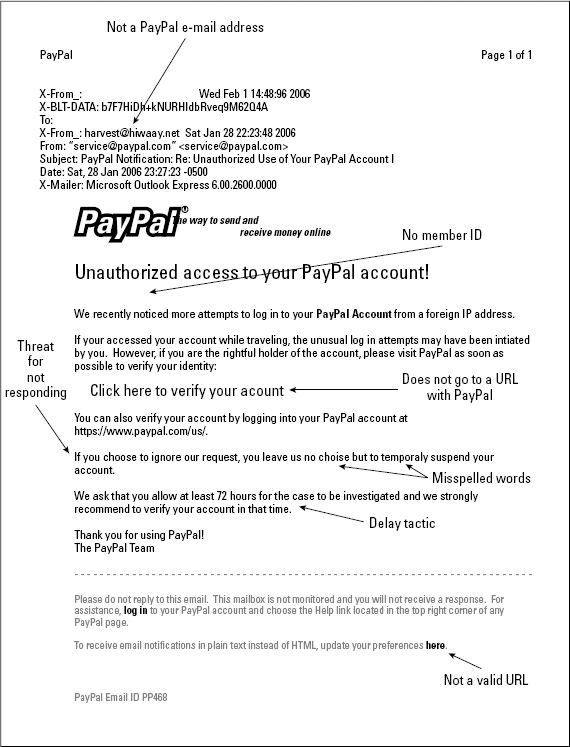Staying Away from E-Mail Scams
You should be familiar with two schemes that affect the way you handle e-mail and keep your business safe: phishing (“fish-ing”) and pharming (“farm-ing”). Both methods use unscrupulous means to find personal information or private account information about you and then use it for a hacker's personal gain.
Phishing
Phishing occurs when you receive an e-mail that seems to be from a legitimate source, such as PayPal, Amazon, or even your bank. The e-mail usually requests that you immediately update your account information because it has been compromised or needs to be verified for other reasons. When you click the link (included in your e-mail notice), a bogus site opens that captures your personal information as you “update” the account.
Legitimate companies have done a good job of alerting users to potential phishing scams and making it easier for you to spot e-mails that don't originate with the company. Figure 3-3 shows a sample e-mail and the elements you should look for to determine whether it's real.

Figure 3-3: E-mail that phishes for information.
Generally, though, you should be aware of these details:
- Account verification: Most legitimate e-mails from a member-based company or financial institution now include the last three or four digits of your account number. If the e-mail doesn't have any highly personalized or account-specific information, ...
Get Starting an Online Business All-in-One For Dummies®, 3rd Edition now with the O’Reilly learning platform.
O’Reilly members experience books, live events, courses curated by job role, and more from O’Reilly and nearly 200 top publishers.

